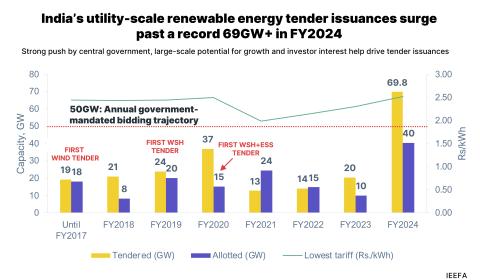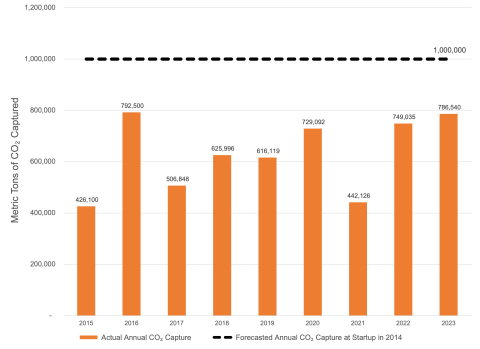Clean-up costs for wells in Guyana, another loophole to benefit ExxonMobil and partners
Download Full Report
Key Findings
ExxonMobil and its partners benefit from a system that requires Guyana to pay for costs of decommissioning wells in advance installments starting from the beginning of the contract.
ExxonMobil and its partners will ultimately receive G$666.1 billion (USD$3.2 billion) for decommissioning costs, but they are not required to set aside and use the money to decommission and clean up the project area after production is done. This runs against industry standards.
ExxonMobil and its oil partners have a real opportunity to pocket millions, if not billions, with no accountability. If they take the money, sell the project before the wells are decommissioned and pass the liability onto a weaker company, Guyana’s taxpayers will be left footing the bill.
Executive Summary
In another example of Guyana being short-changed under its existing petroleum agreement with subsidiary companies of ExxonMobil, Hess and the Chinese National Offshore Oil Company (CNOOC), Guyana is paying the oil companies USD$3.2 billion out of its current oil profits to ensure the wells and related infrastructure developed as part of the Liza Field offshore oil drilling project are properly decommissioned in 20 years. This represents 100% of expected costs. There is no provision to ensure that the money is set aside by the oil companies so that it is actually available in 20 years. This runs against industry standards. ExxonMobil and its oil partners have a real opportunity to pocket millions, if not billions, with no accountability. If they take the money, sell the project before the wells are decommissioned and pass the liability onto a weaker company, Guyana’s taxpayers will be left footing the bill.
This report is the fourth in a series issued by IEEFA covering selected topics of concern related to the 2016 petroleum agreement between the government of Guyana and ExxonMobil, Hess and CNOOC for an offshore oil drilling project located in the Liza field, which is comprised of Liza 1,2,3 and Payara.
The petroleum agreement is a front-loaded, one-sided contract with many provisions that favor ExxonMobil, Hess and CNOOC at the expense of Guyana. One such provision covers decommissioning costs. The provisions covering the decommissioning program and costs are the subject of this report.
When a well is fully depleted, it must be capped and abandoned. This part of the oil and development process costs money, and it is money that is needed when the well itself is not producing revenue any longer. Hence, revenue must be set aside during the period when the well is active to cover these final costs. The agreement between
ExxonMobil and its partners and Guyana provides for decommissioning program costs in a manner that departs from industry standards.
ExxonMobil and its partners benefit from a system that requires Guyana to pay for costs of decommissioning in advance installments starting from the beginning of the contract. Guyana then relies upon the companies to pay for the decommissioning 20 years later. Industry practice establishes that, for such a fossil fuel drilling and extraction project, a trust account should be set up. The trust account can only be used to pay for the abandonment costs when they occur. The agreement does not require that a trust account be established.
The industry standard was established because the financial standing of oil companies can change over time, putting the ability to decommission a site safely and completely at risk. Also, oil and gas assets are frequently sold or transferred, sometimes to companies with fewer resources to address decommissioning costs. The Guyana agreement allows ExxonMobil or its partners to sell the contract. This could allow ExxonMobil and its partners to recover, millions—if not billions—and then pass the liability to the next company, which may or may not be in a position to absorb it. A trust account would ensure that the money paid by Guyana now is available when the time comes to close down the well.
In short, ExxonMobil and its partners will ultimately receive G$666.1 billion (USD$3.2 billion) for decommissioning costs, but they are not required to set aside and use the money to decommission and clean up the project area after production is done. This provision puts Guyana at financial risk and could turn out to be nothing more than a gimmick that enhances the profits of the oil companies.
- The Liza One project is estimated to cost G$68.6 billion (USD$328 million) to decommission. For the Liza/Payara development, the total cost of decommissioning is estimated at G$666.1 billion (USD$3.2 billion).
- Ultimately, the decommissioning costs are folded on top of Guyana’s other costs and act as a hidden liability for Guyana. The liability, along with other liabilities hidden from the public as explained in this report, must be satisfied before Guyana will reap the contractually required 50/50 split of profit oil.
- Last year, Guyana drew down G$131.8 billion (USD$630.6 million) it received from oil revenues for its budget. The sum constituted all of the money received by Guyana from the project since 2019. The amount was not enough to cover its deficit or new expenses or make a deposit in its sovereign wealth fund. The government spent 79 percent of the funds on capital projects.
- IEEFA estimates that ExxonMobil and its partners have cleared $752.4 billion (USD$3.6 billion) since 2019, almost six times Guyana’s total revenues from the project.
- IEEFA estimates that ExxonMobil and its partners claimed a decommissioning cost recovery of G$10.4 billion (USD$50 million) since December 2019. This is added to ExxonMobil’s total cost recovery claim that Guyana must advance to ExxonMobil and its partners prior to the country receiving revenues that will allow it to meet its fiscal goals to eliminate the deficit, increase spending, decrease debt and contribute to the sovereign wealth fund.
- The level of decommissioning costs paid in any given year is based on the proportion of oil extracted from the total remaining reserves. IEEFA estimates that in future years, the annual decommissioning cost for the Liza field will grow and then decline. In 2022, IEEFA estimates the cost will be G$18 billion (USD $86 million), inclusive now of Liza Unity and Destiny. Eventually, all G$661.1billion (USD$3.2 billion)—100 percent—of decommissioning costs will have been paid to ExxonMobil and its partners, and Guyana’s revenues will have been reduced accordingly.
This review is impaired by the lack of transparency that governs the implementation of the agreement. The Guyana government and ExxonMobil, the operator of the project, do not routinely publish regular and timely data that would allow residents and interested parties to answer the questions raised in this report. To its credit, the government and the Bank of Guyana do disclose on a regular basis how much revenue is received from the agreement. In this report, IEEFA has made estimates based on very limited available data from the Guyana government, ExxonMobil and third-party industry sources and media accounts. As such, IEEFA has made certain assumptions which we identify in the report. Additional disclosures by ExxonMobil and Guyana related to decommissioning and other contract matters would enhance and potentially change the report. IEEFA is confident that with such data, a more accurate picture could be drawn of the project and its current status. IEEFA nevertheless believes that based on the data available, the conclusions reached here are documented and sound.












